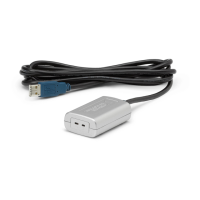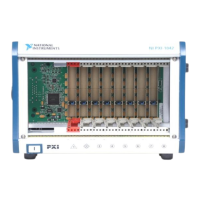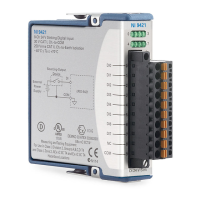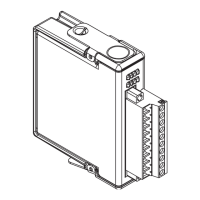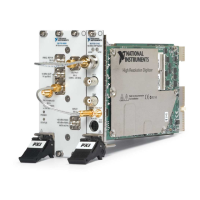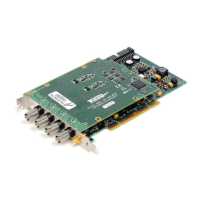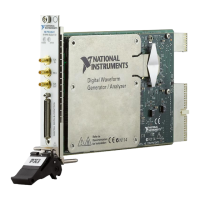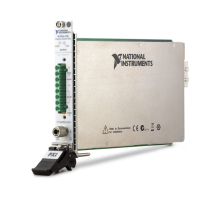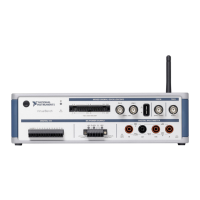Chapter 9 Isolation and Digital Isolators on USB-6215/6216/6218 Devices
© National Instruments Corporation 9-2 NI USB-621x User Manual
The non-isolated ground is connected to the chassis ground of the PC.
Each isolated ground is not connected to the chassis ground of the PC.
The isolated ground can be at a higher or lower voltage relative to the
non-isolated ground. All analog measurements are made relative to the
isolated ground signal.
The isolated ground is an input to the USB-6215/6216/6218 device. The
user must connect this ground to the ground of system being measured or
controlled. For more information, refer to the following:
• The Connecting Analog Input Signals on USB-6215/6216/6218
Devices section of Chapter 4, Analog Input
• The Connecting Analog Output Signals section of Chapter 5, Analog
Output
• The Connecting Digital I/O Signals on USB-6210/6211/6215/6218
Devices or Connecting Digital I/O Signals on USB-6212/6216 Devices
section of Chapter 6, Digital I/O
• The Connecting PFI Input Signals section of Chapter 7, PFI
Digital Isolation
USB-6215/6216/6218 devices u se digital isolators. Unlike analog isolators,
digital isolators do not introduce any analog error in the measurements
taken by the device. The A/D converter, used for analog input, is on the
isolated side of the device. The analog inputs are digitized before they are
sent across the isolation barrier. Similarly, the D/A converters, used for
analog output, are on the isolated side of the device.
Benefits of an Isolated DAQ Device
With isolation, engineers can safely measure a small signal in the presence
of a large common-mode voltage signal. Some advantages of isolation are
as follows:
• Improved Rejection—Isolation increases the ability of the
measurement system to reject common-mode voltages.
Common-mode voltage is the signal that is present or “common” to
both the positive and negative input of a measurement device, but is
not part of the signal to be measured.
• Improved Accuracy—Isolation improves measurement accuracy by
physically preventing ground loops. Ground loops, a common source
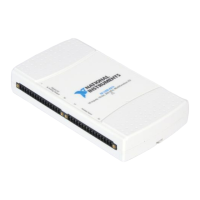
